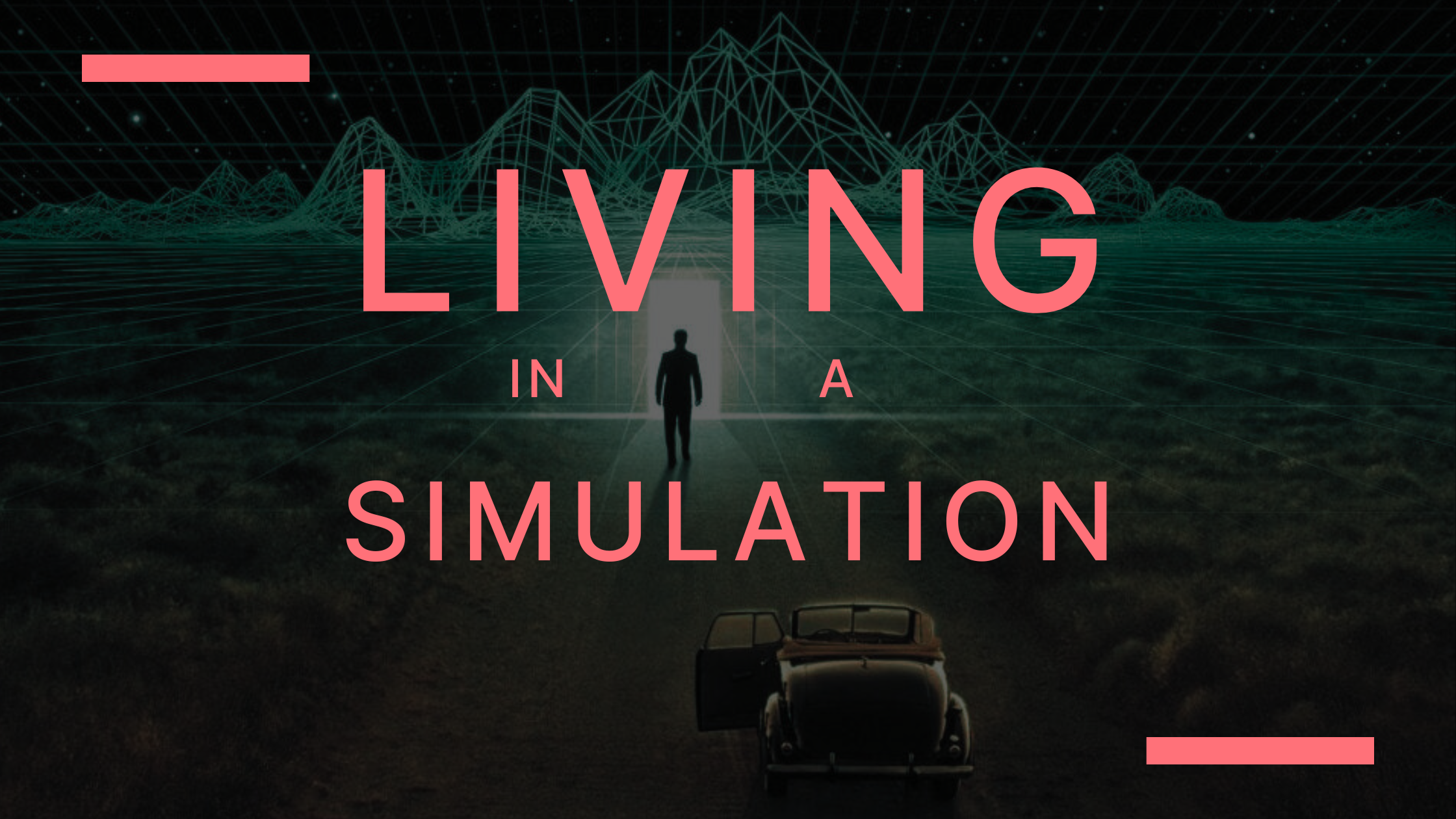The question of whether we are living in a simulation has gained significant traction in recent years, sparking debates among philosophers, scientists, and tech visionaries. This concept, often referred to as the “simulation hypothesis,” proposes that our reality might be an artificial construct created by a more advanced civilization or intelligence.
What is a Simulation?
A simulation is a virtual representation of a real-world system, process, or environment designed to mimic its behavior and characteristics. It allows users to explore, analyze, and predict outcomes without the risks or costs associated with real-world experimentation.
Simulations can range from simple mathematical models to complex computer-generated scenarios, encompassing fields such as science, engineering, economics, and entertainment. They serve various purposes, including training, decision-making, research, and education. By manipulating variables and observing results, simulations provide valuable insights into complex systems, enabling users to test hypotheses, optimize processes, and prepare for potential scenarios.
Ultimately, simulations bridge the gap between theory and practice, offering a powerful tool for understanding and interacting with the world around us.
Popular Theories
The Simulation Argument
Philosopher Nick Bostrom’s 2003 paper “Are You Living in a Computer Simulation?” popularized the simulation hypothesis. Bostrom argues that at least one of the following propositions is likely to be true:
a) Civilizations typically become extinct before reaching a “posthuman” stage.
b) Posthuman civilizations are unlikely to run simulations of their evolutionary history.
c) We are almost certainly living in a computer simulation.
Ancestor Simulations
Elon Musk, among others, has suggested that advanced civilizations might create “ancestor simulations” to study their own history or for entertainment purposes. If this were possible, the number of simulated realities could vastly outnumber “base reality,” making it statistically more likely that we are in a simulation.
The Matrix Theory
Inspired by the popular film franchise, this theory posits that we might be living in a simulated reality created by artificial intelligence or another advanced entity, often with the implication that our physical bodies exist elsewhere.
Digital Physics
Some physicists, like James Gates, have noted similarities between certain physics equations and computer error-correcting codes, leading to speculation that our universe might be a type of computer program. This is sometimes discussed in the context of whether life is a simulation.
Proof We’re Living in a Simulation
Are we living in a computer simulation? This mind-bending question has captivated philosophers, scientists, and tech visionaries alike. The simulation hypothesis proposes that our perceived reality is actually an artificial construct, created by an advanced civilization with immense computational power. While it may sound like science fiction, there are compelling arguments and observations that lend credence to this theory.
Let’s explore the evidence that suggests we might be living in a simulated reality.
The Advancement of Technology
One of the strongest arguments for the simulation hypothesis is the rapid advancement of our own technology. As we develop increasingly sophisticated virtual reality systems and computer simulations, it becomes easier to imagine a future where creating fully immersive, lifelike simulations is possible.
Elon Musk, CEO of Tesla and SpaceX, famously stated,
“The odds that we’re in base reality is one in billions” (Solon, 2016).
Musk’s argument is based on the exponential growth of computing power and the likelihood that an advanced civilization would create numerous simulations of their ancestors.
Quantum Mechanics and the Observer Effect
The bizarre nature of quantum mechanics provides another intriguing piece of evidence for the simulation hypothesis. The observer effect, which suggests that the act of observation affects the behavior of particles, bears a striking resemblance to how video games render graphics only when a player is looking in a particular direction to conserve processing power.
Physicist James Gates has discovered error-correcting codes in the equations of supersymmetry that are eerily similar to those used in computer programming (Gates, 2010). This finding has led some to speculate that these codes could be evidence of the underlying structure of our simulated reality.
The Fine-Tuning of the Universe
The apparent fine-tuning of the universe’s fundamental constants has long puzzled scientists. If any of these constants were even slightly different, life as we know it would be impossible. This fine-tuning could be explained if our reality were a simulation designed to support conscious life.
Nick Bostrom, a philosopher at Oxford University, argues in his seminal paper “Are You Living in a Computer Simulation?” that if it’s possible to create simulations indistinguishable from reality, then the number of simulated realities would far outnumber the “real” one, making it statistically likely that we are in a simulation (Bostrom, 2003).
The Limits of the Observable Universe
The existence of a cosmic speed limit (the speed of light) and the presence of an observable universe boundary could be interpreted as limitations set by the simulation’s creators to manage computational resources. These constraints are similar to those found in video games, where render distances and map boundaries are used to limit the amount of data that needs to be processed at any given time.
The Discreteness of Space and Time
At the smallest scales, our universe appears to be discrete rather than continuous. This quantization of space and time, as described by theories like loop quantum gravity, is reminiscent of the pixelation in digital simulations. The Planck length and Planck time could be seen as the fundamental “resolution” of our simulated reality.
Glitches in the Matrix
Unexplained phenomena and apparent inconsistencies in our reality, such as déjà vu experiences or the Mandela Effect (where large groups of people share false memories), have been interpreted by some as glitches in the simulation. While these can be explained by psychological factors, they add an intriguing layer to the simulation argument.
The Holographic Principle
The holographic principle, proposed by theoretical physicist Leonard Susskind, suggests that the information contained in a volume of space can be described by a theory that operates on its boundary. This concept aligns with the idea of a simulated reality, where a three-dimensional world could be generated from two-dimensional information (Susskind, 1995).
The Fermi Paradox and the Simulation Hypothesis
The Fermi Paradox, which questions why we haven’t encountered alien civilizations despite the vastness of the universe, could be explained by the simulation hypothesis. If we are in a simulation, it may be focused solely on Earth and its inhabitants, with the rest of the universe serving as a convincing backdrop.
The Nature of Consciousness
The hard problem of consciousness – understanding how subjective experiences arise from physical processes in the brain – remains unsolved. The simulation hypothesis offers a potential explanation: our consciousness could be an emergent property of the simulation itself, similar to how artificial intelligence emerges from complex algorithms.
Mathematical Universe Hypothesis
Mathematician Max Tegmark’s Mathematical Universe Hypothesis proposes that our physical reality is a mathematical structure (Tegmark, 2008). This idea aligns with the simulation hypothesis, as it suggests that our universe could be described entirely by mathematical equations, much like a computer program.
Proof that We’re not Living in a Simulation
Proving we’re not living in a simulation is inherently challenging because the hypothesis itself suggests we cannot distinguish between simulated and base reality. However, one argument against it is the lack of empirical evidence supporting the idea that our universe operates as a computer program.
Additionally, the complex nature of consciousness and physical laws in our universe does not currently point to computational errors or limitations. Without concrete evidence of simulated phenomena or discrepancies in physical laws, the simulation hypothesis remains speculative, and our inability to disprove it doesn’t confirm its validity.
What If Our Reality Is Not as Real as We Think?
While the simulation hypothesis remains unproven, the evidence presented here offers compelling reasons to consider the possibility that our reality may not be as “real” as we think. From the advancement of technology to the quirks of quantum mechanics, numerous observations seem to align with the idea of a simulated universe.
However, it’s important to note that even if we are living in a simulation, it doesn’t necessarily negate the value or meaning of our experiences. As philosopher David Chalmers points out,
“Even if we’re in a simulation, our lives and our experiences are still perfectly real” (Chalmers, 2022).
The simulation hypothesis challenges our understanding of reality and consciousness, pushing us to question the nature of our existence. Whether we’re in base reality or a highly advanced simulation, the quest for knowledge and understanding remains a fundamental aspect of the human experience.
Analysis through Social Theories
Postmodernism
Postmodernist thinkers might view the simulation hypothesis as an extension of their critique of objective reality. Jean Baudrillard’s concept of hyperreality, where simulations become more “real” than reality itself, aligns closely with the simulation argument. Postmodernists might argue that the very question of whether we’re in a simulation highlights the constructed nature of our reality and the blurring lines between the “real” and the “simulated” in our increasingly digital world.
Social Exchange Theory
Through the lens of social exchange theory, we might consider the costs and benefits of believing in or rejecting the simulation hypothesis. Believers might find comfort in the idea of a designed universe or hope for intervention from the simulators. Skeptics might value the perceived autonomy of a non-simulated existence. The theory would suggest that individuals and groups adopt beliefs about simulation based on their perceived rewards and costs.
Conflict Theory
A conflict theory perspective might examine how the simulation hypothesis could be used as a tool for social control or to reinforce existing power structures. If certain groups claim to have special knowledge about the simulation or its creators, they might use this to gain influence or resources. Additionally, the theory might explore how different socioeconomic classes might react to or be affected by widespread belief in a simulated reality.
Symbolic Interactionism
Symbolic interactionists would focus on how the concept of living in a simulation affects individual and group behaviors and interactions. They might explore how people assign meaning to the idea of a simulated reality and how this shapes their worldviews and daily interactions. The theory could also examine how the language and symbols associated with the simulation hypothesis influence social discourse and personal identity formation.
Critical Theory
Critical theorists might approach the simulation hypothesis as a reflection of broader societal issues and power dynamics. They could argue that the popularity of this idea stems from feelings of powerlessness in the face of rapid technological change and global challenges. The theory might also critique the simulation hypothesis as a form of technological determinism that distracts from real-world social and environmental issues.
Conclusion
The simulation hypothesis presents a fascinating intersection of philosophy, technology, and social theory. While it remains unproven and perhaps unprovable, its implications touch on fundamental questions about the nature of reality, consciousness, and our place in the universe.
From a postmodernist perspective, the simulation hypothesis underscores the fluid nature of reality and our understanding of it. Social exchange theory helps us understand why individuals might adopt or reject this belief based on perceived personal benefits. Conflict theory reveals potential power dynamics at play in the propagation and acceptance of such ideas. Symbolic interactionism illuminates how this concept shapes our interactions and self-perception. Finally, critical theory encourages us to examine the broader societal context and implications of widespread belief in a simulated reality.
As technology continues to advance and our ability to create increasingly complex simulations grows, the question of whether we are living in a simulation is likely to remain a topic of intense debate and speculation. Regardless of its ultimate veracity, the simulation hypothesis serves as a compelling thought experiment that challenges our assumptions about reality, consciousness, and the nature of existence itself.



Leave a Reply